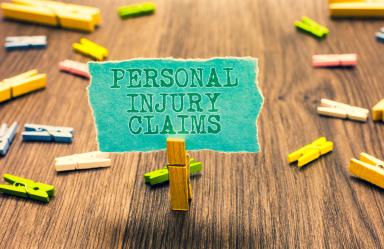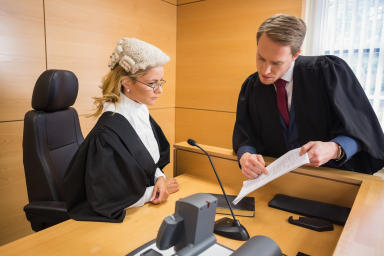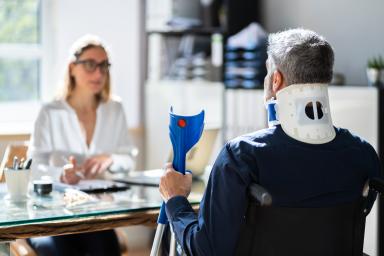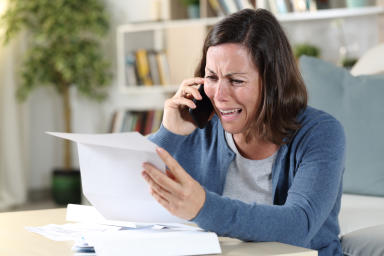Connecticut Personal Injury Laws

Injuries are unfortunately common in Connecticut. In 2020, 130,156 adults 65 and older slipped and fell; in 2022, 245,390 people were involved in car crashes. Thankfully, if you are injured due to another party’s fault, you may hold them accountable in line with Connecticut’s personal injury laws. For instance, if you get hurt while at work, the Work Compensation Act ensures you are compensated according to the severity of the incident.
This article discusses some of the most important personal injury laws in Connecticut. It is important to be aware of them so you can protect your rights if you incur an injury.
Connecticut’s Modified Comparative Fault System
Connecticut is one of 23 states in the nation that follow the modified comparative fault system, which determines how much one can receive in a personal injury lawsuit. It specifies that if a plaintiff is deemed partially at fault, the compensation they can obtain will be reduced by their degree of responsibility.
For example, if they are 30% liable for an accident and request $100,000 in damages, they can only recover $70,000. This is because $30,000 — or 30% — is the amount of damages attributable to their negligence.
However, it should be noted that a plaintiff can only recover damages if their fault is not 51% or more.
Here is a table that summarizes the modified comparative fault system in Connecticut:
Connecticut’s Pure Comparative Fault System for Product Liability Actions
In Connecticut, product liability actions are an exception to the modified comparative fault system. In these cases, the plaintiff's percentage of fault does not matter as long as it is not 100%. This means that even if one is 80% at fault for their own injury, they are not barred from receiving damages from the defendant.
However, the amount of damages they can get will still be reduced by their percentage of fault. If their injury and expenses are worth $100,000 and they are found 80% at fault, they will only receive a final award of $20,000.
Connecticut’s Negligence and Liability Laws
After an accident, establishing negligence is essential because of the modified comparative fault system in Connecticut. It will affect how liability and damages are assigned in lawsuits.
For instance, the state's Good Samaritan Law provides individuals who assist in emergencies with immunity, so they will not be liable for damages they may unintentionally cause to the person they are helping. Specifically, it may protect them from being held responsible for ordinary negligence. However, the law states that this immunity does not extend to grossly, intentionally, or blatantly negligent actions.
The law also has a section that discusses when a political subdivision can be deemed liable for a plaintiff’s damages. It states that an agency is responsible for its employees, officers, and agents found to be negligent while performing within the scope of their employment or official duties.
Connecticut’s Product Liability Law
Another important liability rule in Connecticut is the product liability law. It enables people to collect damages for an injury they incurred from a product falling under any of these categories:
It is defective because of manufacturing or design flaws.
It does not have sufficient labels or warnings that discuss its potential risks.
Its risks are misrepresented or undisclosed.
The law also specifies that product liability lawsuits or claims are charged against product sellers, who can be any of the following:
Manufacturers.
Wholesalers.
Distributors.
Retailers.
Lessors.
Bailors.
Moreover, a claimant does not have to be the product buyer to sue the seller for liability. Thus, if you are gifted an item that causes an injury, you may still pursue legal action.
Connecticut’s Premises Liability Law
People in Connecticut can be held responsible for accidents on their properties under this law. For instance, if a person slips and falls inside a building, its owner may be required to pay damages if it is proven that they were at fault for the incident.
Situations Where Property Owners Are Held Liable
Here are some situations where property owners may be deemed liable:
Liability for failing to warn or guard against danger: Property owners are at fault when they do not warn or guard against danger on their property or when an injury occurs after they charge a fee for people to enter and use their land.
Liability for injuries to children trespassers: Property owners are not usually responsible for injuries to trespassers, but there are exceptions if the injured is a child. If a person knows or should know that kids are likely to trespass on their property, they must make it safe for children.
Liability for injuries to licensees: Landowners are liable for the injuries of licensees on their property if they already knew about the dangerous condition that caused the injury, knew that the licensees were unlikely to discover the condition, and did not take reasonable steps to make the area safe.
Situations Where Property Owners Are Not Held Liable
Property owners are not liable in the following situations:
Free recreational use: Property owners are not liable for injuries that occur on their property when it is made available for recreational use without a fee. They are also not required to keep the area safe or put up danger warnings.
Motorized vehicle mishaps: Property owners are not liable for injuries that occur on their property when the injury is caused by a motorized vehicle, such as a snowmobile, motorcycle, minibike, or minicycle. This is true even if the property owner charges a fee for using the vehicles. However, they may be liable if they willfully or maliciously cause harm that results in someone else’s injury.
Maple-sugaring, fruit harvesting, and firewood gathering: Property owners are not liable for injuries that occur on their property when the injury is caused by someone who is maple-sugaring and harvesting fruits, vegetables, or firewood. However, they may be liable if they fail to warn the harvesters of a risk or hazard they are aware of.
Connecticut’s Workers’ Compensation Act
Connecticut recorded 32,700 cases of non-fatal private workplace injuries and illnesses and 23 workplace fatalities in 2021. People who become ill or injured while at work or because of work may receive compensation through the Workers' Compensation Act.
The law requires all employees in Connecticut to report injuries or illnesses incurred at or due to work. If an employee cannot file a report personally, their supervisor may do so on their behalf. After that, the state's third-party claims administrator will either approve or reject the claim after receiving the report. If the claim is approved, the employee will receive compensation for medical expenses, lost wages, and other benefits.
The Workers' Compensation Commission implements the Workers' Compensation Act. Those who want to benefit from it must contact the commission for application details to become part of the disability insurance program. Members can also stay updated about changes or additions to the Act through the WCC.
Connecticut’s Leash and Dog Bite Law
A dog has the potential to bite or injure people, despite how non-aggressive it may be. In fact, the US Postal Service announced that 5,300 of its employees were attacked by dogs in 2022. Of those figures, 67 were recorded in Connecticut.
To avoid such unwanted incidents, residents of the Nutmeg State should abide by the Dog Bite and Quarantine Law. It states that owners are strictly liable for the injuries their dogs cause. Therefore, if a person is being negligent or knows their dog is aggressive, they must be held accountable for any harm their pet may bring about.
Despite this, there are certain instances where owners may not be liable for injuries caused by their dogs:
The injured person was trespassing.
The injured person was committing another tort.
The injured person was "teasing, abusing, or tormenting the dog."
However, the law also assumes that children under seven are not trespassing, committing a tort, teasing, abusing, or tormenting a dog when they get attacked, unless proven otherwise by the defendant.
Additionally, if several dogs attack a person and there are several owners or keepers, each one is responsible for the total damages. This means expenses will not be divided among the liable parties.
Finally, it is not just dog owners or keepers who can be held liable for injuries caused by these animals. In one Connecticut case, a landlord was deemed responsible after a tenant's dog bit another tenant. The landlord had been aware of the pet's aggressiveness but had failed to alleviate or prevent the dangers it presented while on the property.
Connecticut’s Business Liability Insurance Requirements
These are the types of insurance Connecticut requires for businesses:
Workers' Compensation Insurance
Businesses with at least one employee must have workers’ compensation insurance for each employee. It must compensate them for work-related illnesses, injuries, or even death.
However, there are a few exceptions to this requirement, such as LLC members, sole proprietors, and household workers who are not working more than 25 hours a week.
Commercial Auto Insurance
Businesses with vehicles are required to have commercial auto insurance, which is different from personal auto insurance. These are the minimum coverages:
Professional Liability Insurance
People licensed for patient care and physical therapy must have personal liability insurance to address injury, death, or malpractice claims. These are the requirements:
How Much Can Someone Sue for an Injury in Connecticut?
Plaintiffs filing a personal injury case in the state may receive compensation for economic and non-economic damages. Economic damages refer to calculable costs, such as medical bills, property damage, and lost wages. Meanwhile, non-economic damages pertain to intangible losses, like pain and suffering, whose value is harder to compute. In Connecticut, there is no limit on the amount a plaintiff can request for economic and non-economic damages.
Meanwhile, in particular instances, the court may require a defendant to pay punitive damages, which are intended to punish them for their wrongdoing and deter them from engaging in similar behavior in the future. The limit on punitive damages is usually equivalent to the plaintiff's attorney's fees and litigation costs.
Connecticut’s Statute of Limitations
The statute of limitations in Connecticut for personal injury lawsuits — including those caused by medical malpractice — is two years from the day the injury was incurred, discovered, or should have been reasonably discovered. Thus, if you get involved in a vehicular accident or a slip and fall incident, you must file your case within two years. Otherwise, your lawsuit will not be heard in court and you cannot collect damages.
Libel and slander, both forms of personal injury, have the same statute of limitations. The clock begins on the date a defamatory statement is published or made.
Other Statutes of Limitations in Connecticut
While the two-year timeframe applies to most personal injury lawsuits, this is not always the case. Certain situations require a longer statute of limitations:
Product liability claims: The statute of limitations for personal injury lawsuits involving product liability is three years. In addition, the lawsuit must be filed no more than 10 years since the plaintiff had the product.
Wrongful death claims: The statute of limitations for a wrongful death action is two years from the date of the victim’s passing, unless it was caused by injuries that did not immediately result in death. In that case, the statute of limitations is five years from the date of the accident that caused the injuries.
Tort cases: The statute of limitations for tort cases is typically three years after the act or omission that caused the injury. A tort is a civil wrong that results in injury to another person or property. Torts can be classified under intentional, negligent, or strict liability.
Exceptions to the Statute of Limitations
Most statutes of limitations begin on the day an injury is incurred. However, there are exceptions to this rule:
The defendant is not in Connecticut: The time a defendant spends outside of the state is not counted toward the statute of limitations. However, this period cannot exceed seven years.
The defendant fraudulently conceals facts or the cause of injury: If a defendant conceals information that would have allowed a plaintiff to file a lawsuit sooner, the statute of limitations may be tolled or paused. In this case, the clock will begin to run from the date the plaintiff discovered the injury rather than the date when the injury occurred. This rule is often relevant to medical malpractice claims.
The plaintiff is a minor: If a minor is injured due to negligence, they can file a lawsuit themselves when they turn 18 but before they reach 19. However, the injury must have occurred less than eight years before they turn 18. For example, if a minor is injured at age 12, they can still file a lawsuit when they turn 18, even if the statute of limitations would have expired otherwise.
Legal Resources for Injured Folks in Connecticut
Ultimately, injuries can occur in different ways; people can be injured in car accidents, by faulty products, or on the job. To help injured victims understand their legal rights and options, here are resources on asserting one’s legal claims and getting maximum compensation:
Connecticut Workers' Compensation Commission
The Workers' Compensation Commission website is a valuable resource for individuals injured at work or those who want to be protected by the disability insurance program. The site compiles necessary forms, announcements, and other information essential to Connecticut employees.
Connecticut Insurance Department
The Connecticut Insurance Department handles compensation for personal injuries, which are typically paid out by insurance companies. The department's website provides information on various insurance types and makes it easy to access relevant forms. If you have an insurance issue, the website also provides the information and contact details you need to file a complaint with the department.
Connecticut Judicial Branch
The state's judicial branch website provides a comprehensive directory of legal clinics and offices organized by practice area. Visitors seeking help with personal injury cases may find the "General Help" category most relevant, as it includes a list of attorney referrals and lawyers who can answer legal questions.
CTLawHelp Legal Help Finder
CTLawHelp is a website created by various nonprofit organizations — including Statewide Legal Services, Connecticut Legal Services, and CTProBono.org — to provide free legal information to low-income residents. It has a Legal Help Finder tool that enables users to describe their legal problems and access the information most relevant to their case.
Expertise.com StaffAuthor
Step into the world of Expertise.com, your go-to hub for credible insights. We don't take accuracy lightly around here. Our squad of expert reviewers, each a maestro in their field, has given the green light to every single article you'll find. From rigorous fact-checking to meticulous evaluations of service providers, we've got it all covered. So feel free to dive in and explore. The information you'll uncover has been stamped with the seal of approval by our top-notch experts.




